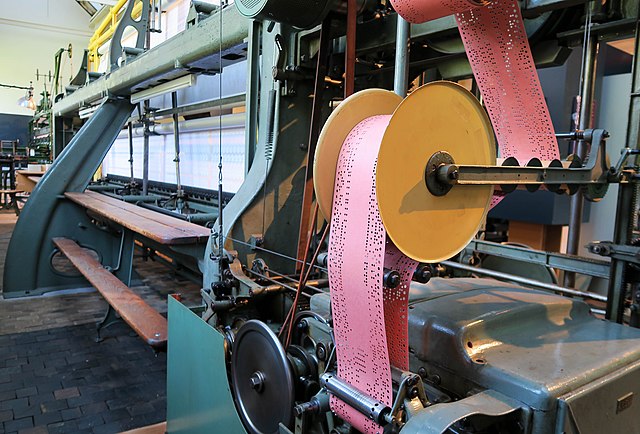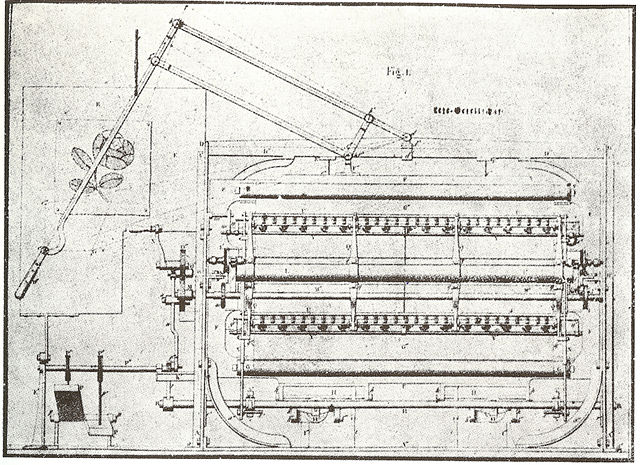Schiffli embroidery machine
The schiffli embroidery machine is a multi-needle, industrial embroidery machine. It was invented by Isaak Gröbli in 1863. It was used to create various types of machine embroidery and certain types of lace. It was especially used in the textile industry of eastern Switzerland and Saxony Germany, but also in the United Kingdom and the United States. Schiffli machines evolved from, and eventually replaced manually operated "hand embroidery" machines. The hand embroidery machine used double ended needles and passed the needles completely through the fabric. Each needle had a single, continuous thread. Whereas the schiffli machine used a lock stitch, the same technique used by the sewing machine. By the early twentieth century schiffli machines had standardized to ten and fifteen meters in width and used more than 600 needles.
Fully automated schiffli embroidery machine by Saurer
Card reader fully automated schiffli embroidery machine by Saurer
Schiffli bobbin thread holders
Schiffli bobbin thread winding machine
The hand embroidery machine is a manually operated embroidery machine. It was widely used in the Swiss embroidery industry during the late nineteenth and early twentieth centuries. It was also used in the lace industry near Plauen, Germany, and it played a role in the development of the embroidery industry centered in Hudson County, New Jersey during the early 20th century.
Hand embroidery machine by Karl Bleidorn, Industriekultur Museum Neuthal, Switzerland
Fig. 1. Hand machine and needle threading machine about 1890, see text for details
Fig. 3. Hand embroidery machine, side view. See text for description
Original drawing of the machine invented by Joshua Heilmann, front view








